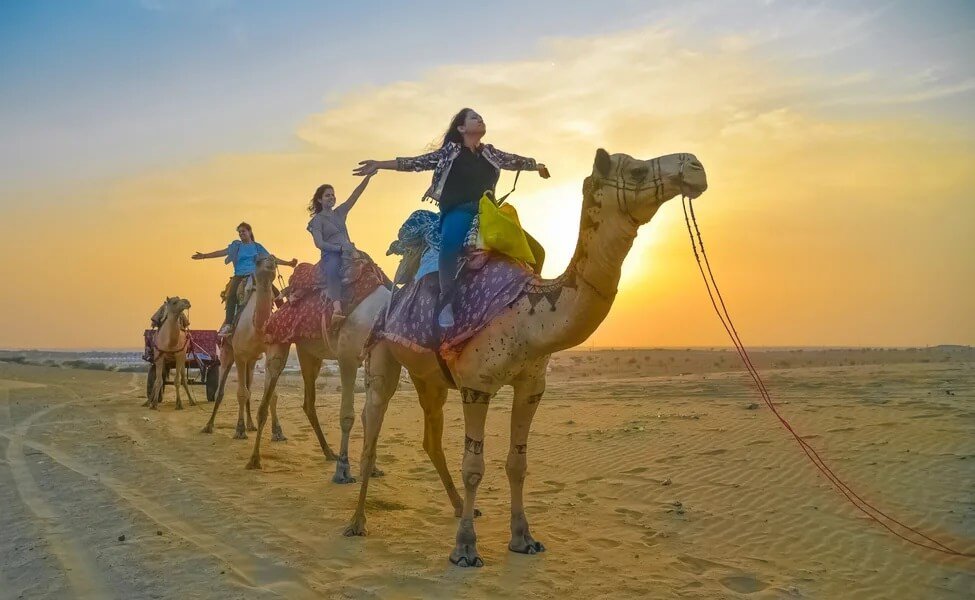The Golden Triangle in India—comprising Delhi, Agra, and Jaipur—forms a unique travel circuit that encapsulates the essence of the country’s imperial past. This triangle-shaped route offers a rare juxtaposition: the precision and power of the Mughal era mirrored against the fierce pride and aesthetic finesse of Rajput rule. Exploring these cities reveals not just architectural marvels but also a deep understanding of how history, culture, and identity intertwine.
Delhi: The Mughal Capital of Power and Planning
Delhi, the first vertex of the Golden Triangle, holds centuries of layered history. From the narrow lanes of Chandni Chowk to the towering presence of the Red Fort and Jama Masjid, this city reflects the zenith of Mughal urban planning. The layout of Shahjahanabad, with its hierarchy of spaces, showcases the refined taste of Emperor Shah Jahan, also known for commissioning the Taj Mahal. Beyond the Mughal grandeur, Delhi presents a living history—where ancient tombs and colonial-era structures coexist with bustling modern markets and political centers.
Agra: The Symbolic Heart of Mughal Grandeur
Agra’s significance goes beyond being home to the Taj Mahal. It served as the capital of the Mughal Empire under Akbar and continued to flourish under his successors. The Golden Triangle Tour typically positions Agra as a central stop, allowing travelers to witness not only the famed white marble mausoleum but also the formidable Agra Fort and the serene Mehtab Bagh. These sites reflect the Mughal emphasis on geometry, symmetry, and scale—hallmarks of their architectural philosophy.
Jaipur: Rajput Valor and Architectural Elegance
As the third and final point of the triangle, Jaipur introduces travelers to the rich Rajputana legacy. Founded by Maharaja Sawai Jai Singh II in 1727, the city was meticulously planned with grid patterns, a rarity in Indian urban design of that era. Forts like Amber and Nahargarh and palaces such as Hawa Mahal and City Palace are testimonies to Rajput defensive ingenuity and aesthetic brilliance. Unlike the solemn symmetry of Mughal buildings, Rajput architecture thrives on vibrant colors, intricate carvings, and symbolic motifs drawn from Hindu cosmology.
A Visual and Cultural Contrast: Mughal vs Rajput Aesthetics
The Golden Triangle India route uniquely highlights the contrasting architectural and cultural signatures of the Mughals and Rajputs. While the Mughal style is defined by Persian influence, extensive use of red sandstone and white marble, and balanced proportions, Rajput designs lean towards ornate façades, bold frescoes, and fortifications suited for warfare. This contrast is not only visual but also rooted in the differing socio-political ethos: centralized Mughal authority versus decentralized Rajput clan governance.
Wildlife Meets Heritage: Extension to Ranthambore
Adding a wildlife dimension to this cultural journey is the Golden Triangle Tour With Ranthambore. Nestled between Agra and Jaipur, Ranthambore National Park offers a glimpse into India’s ecological heritage. The park, once a royal hunting ground, now serves as a protected tiger reserve. Exploring its forested terrain punctuated with ruins and a 10th-century fort gives visitors a rare experience where natural beauty and historic remnants coexist.
Sacred Continuum: Varanasi as a Spiritual Add-On
For travelers seeking a deeper philosophical dimension, the Golden Triangle Tour with Varanasi offers a spiritual counterpoint. Varanasi, believed to be one of the world’s oldest continuously inhabited cities, sits far from the architectural symmetry of Delhi and Agra or the fortifications of Jaipur. Yet, it resonates with a different kind of grandeur—one that is metaphysical. Watching the Ganga Aarti at the ghats, witnessing cremation rituals, or simply walking through the labyrinthine alleys gives insight into India’s enduring engagement with life, death, and rebirth.
From Palaces to Lakes: A Scenic Shift from Jaipur to Udaipur
While Jaipur ends the classic triangle, many choose to extend their journey southward toward Udaipur—often referred to as the ‘City of Lakes.’ The route from Jaipur to Udaipur Taxi not only offers a scenic drive through Aravalli landscapes but also a thematic shift from fortress towns to tranquil lakeside palaces. Udaipur, with its white marble City Palace, Lake Pichola, and Jag Mandir, adds a serene layer to the historical narrative that began with Delhi’s bustling energy.
Why the Golden Triangle is a Singular Heritage Trail
Unlike other travel circuits, the Golden Triangle distills India’s political, spiritual, and cultural narratives within a compact geographic span. It presents different religious traditions—Islamic, Hindu, Jain, and secular-modern—intertwined across centuries. Each city retains a distinct personality, yet all are bound by a shared commitment to preserving history while evolving with time. It’s this synthesis of the monumental with the everyday, the imperial with the indigenous, that makes the Golden Triangle a matchless heritage experience.




